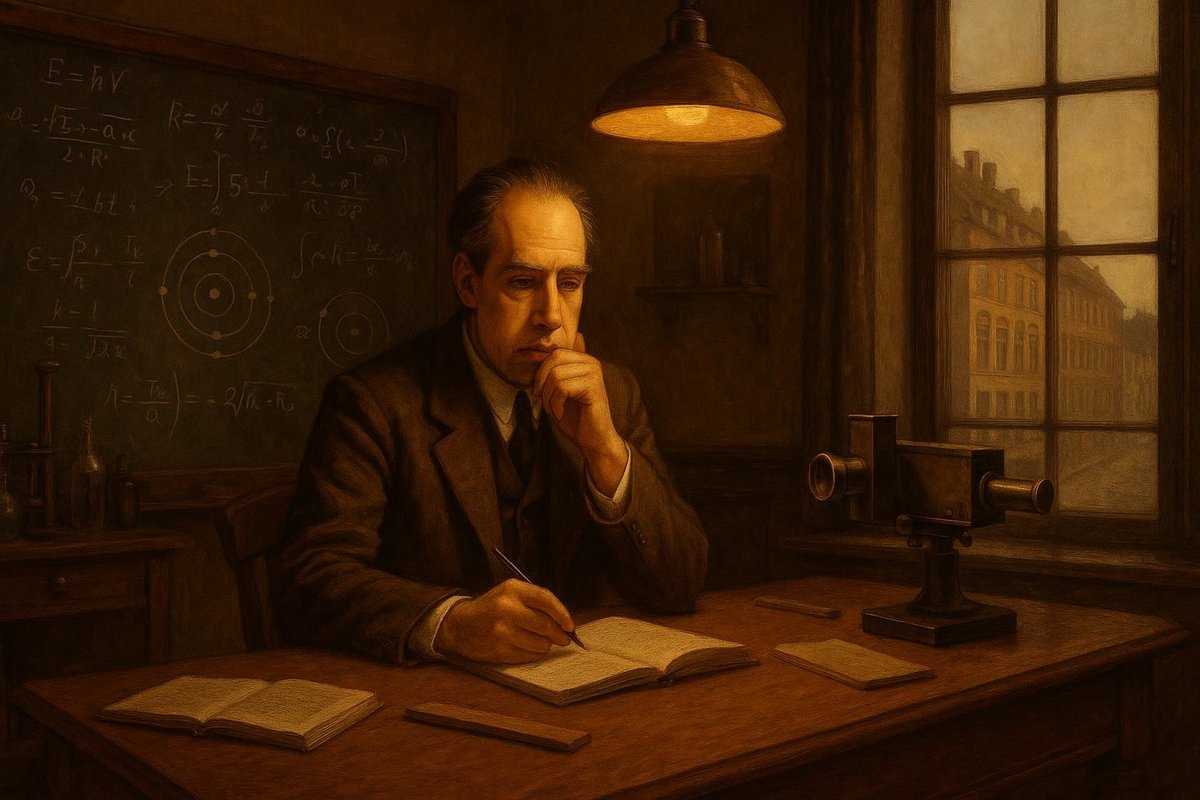
Early Influences That Shaped Bohr’s Vision
In the early 20th century, a young Danish physicist named Niels Bohr was captivated by the mysteries of the atom. Growing up in Copenhagen, Bohr was surrounded by an intellectual atmosphere that nurtured his natural curiosity. His father, a prominent physiologist, instilled in him a rigorous scientific approach, while his mother, from an influential Jewish banking family, encouraged philosophical inquiry. This unique blend of science and philosophy set the stage for Bohr’s revolutionary ideas.
- Bohr’s father, Christian Bohr, was a pioneering physiologist.
- Bohr’s upbringing blended science with philosophical inquiry.
- His early education was marked by an environment of intellectual curiosity.
Interestingly, Bohr’s fascination with understanding the atom’s structure was sparked by his exposure to the works of J.J. Thomson and Ernest Rutherford. But it wasn’t merely fascination; it was a relentless pursuit of understanding that drove Bohr. By the time Bohr was ready to challenge the status quo, he had developed a comprehensive view that merged experimental physics with deep theoretical insights.
Bohr’s Mental Models: From Classical to Quantum
Before Bohr, the atomic model was largely based on classical physics. Rutherford had proposed the nuclear model, where electrons orbited a dense nucleus, akin to planets around the sun. However, this model didn’t explain atomic stability or spectral lines, leaving scientists puzzled. This is where Bohr’s genius came into play.
- Bohr introduced the idea of quantized electron orbits.
- His model explained spectral lines through quantum jumps.
- Bohr’s work laid the foundation for quantum mechanics.
Bohr proposed that electrons travel in fixed orbits and could jump between these orbits without ever being in between—an idea that seemed preposterous at the time. Yet, it was this audacious leap that explained the spectral lines emitted by hydrogen. Bohr’s daring hypothesis of quantum jumps was a profound shift from classical thinking, illustrating how electrons could shift energy levels in discreet steps rather than a continuous flow. No wonder this revolutionary idea became the cornerstone of quantum theory.
Overcoming Challenges with Resilience
Bohr’s quantum model wasn’t immediately accepted. Many scientists clung to classical physics and were skeptical of Bohr’s radical ideas. Bohr faced criticism, especially for the notion of quantum jumps, which seemed to defy logic. Yet, Bohr was undeterred.
- Bohr faced significant skepticism from the scientific community.
- Despite criticism, he remained steadfast in defending his model.
- Bohr’s persistence led to wider acceptance of quantum theory.
Bohr’s resilience was rooted in his belief in experimental validation. He collaborated with renowned physicists, and through meticulous experiments, the accuracy of his quantum model became undeniable. As time went on, Bohr’s ideas gained traction, influencing contemporaries and ushering in new research avenues. His ability to persist amidst skepticism exemplifies the resilience required to shift scientific paradigms.
The Lasting Legacy of Bohr’s Quantum Model
Bohr’s quantum model did more than just alter atomic physics; it paved the way for modern quantum mechanics. His work influenced an entire generation of physicists, including towering figures like Heisenberg and Schrödinger.
- Bohr’s model influenced Heisenberg, Schrödinger, and others.
- His ideas ushered in the age of quantum mechanics.
- Bohr’s legacy continues to shape the scientific community.
Bohr championed the principle of complementarity, which became a cornerstone of quantum theory, emphasizing the dual nature of light and particles. His Copenhagen interpretation still serves as a key framework in quantum mechanics discussions. Today, Bohr’s legacy is evident in the ongoing exploration of quantum computing and nanotechnology, areas that owe much to his pioneering work.
Fuel Someone Else’s Curiosity
Niels Bohr’s journey through the world of atomic physics reminds us of the power of curiosity. His bold hypotheses and willingness to challenge existing paradigms invite us to think beyond the boundaries of conventional science. Share this story with others and inspire a new generation of thinkers who dare to question and explore.
Bohr’s mindset of embracing uncertainty and exploring the unknown remains relevant today. By celebrating Bohr’s contributions, we not only honor a pioneer of quantum theory but also fuel our own curiosity to unravel the mysteries of the universe.

Leave a Reply